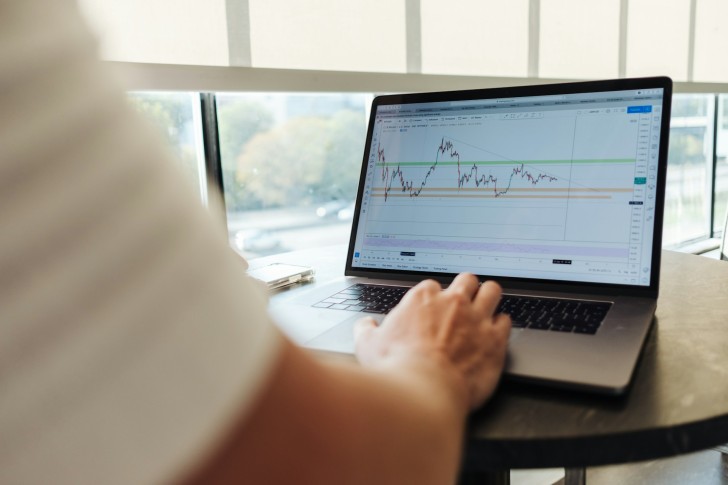Most people wing it. They buy high, sell low, and call it bad luck. But if you want control, consistency, and real gains, it starts with knowing exactly how to play the game, and not just play it, but play it well.
These seven trading tactics aren’t optional. They’re essential. Think of them as your financial edge.
Master the Art of Diversification
Diversification isn’t about playing it safe, it’s about playing smart. At its core, it’s a strategy that protects your portfolio from being derailed by a single underperforming asset. It’s about balance.
A diversified portfolio blends asset classes (stocks, bonds, real estate, commodities, even crypto) and spans sectors and geographies. When tech slumps, maybe energy soars. When the U.S. dollar weakens, gold or international assets might rise. By allocating across different types of risk, you create stability without sacrificing growth potential.
Diversification doesn’t eliminate risk, but it gives you breathing room when the unexpected hits. And in trading, that edge is everything.
Implement Tactical Asset Allocation
Think of tactical asset allocation as the strategic cousin of diversification. Instead of setting your allocation and forgetting it, you make periodic adjustments based on market shifts.
Say inflation is rising. You might increase your exposure to commodities or inflation-protected securities. If the Fed signals interest rate hikes, you could trim your tech holdings and lean into value stocks. The idea is to take a proactive role, reading the market’s temperature and positioning accordingly.
It’s not about chasing trends. It’s about fine-tuning your exposure to improve your risk-adjusted returns over time. Tactical allocation gives your portfolio the flexibility to adapt and thrive.
Develop a Comprehensive Trading Plan
Winging it isn’t a strategy, it’s a gamble. A solid trading plan is the blueprint that keeps your decisions rooted in logic rather than emotion. It defines your goals, outlines your entry and exit criteria, details your risk limits, and sets your position sizing rules.
When the market starts swinging, your plan is what keeps you from making knee-jerk moves. If a trade goes south, you already know when to cut your losses. If it surges, you know when to take profits. It keeps your emotions in check and your capital intact.
Your plan doesn’t have to be complex, it just has to be clear. Review it, refine it, and stick to it.
Harness the Power of Technical Analysis
Fundamentals tell you what to buy. Technicals help you decide when.
Technical analysis uses price charts, volume trends, and indicators like RSI or MACD to assess momentum, identify support/resistance levels, and spot potential reversals. It’s not about predicting the future; it’s about increasing the probability of a good trade.
Patterns like breakouts, pullbacks, and consolidations aren’t random. They reveal the psychology of buyers and sellers. Understanding them gives you a sharper edge in your timing and decision-making.
The more fluent you are in chart analysis, the more confident and consistent your trades will become.
Practice Rigorous Risk Management
Risk isn’t the enemy, recklessness is. One bad trade won’t wreck your account, but a lack of discipline might.
Risk management is about controlling your downside. That means setting stop-loss orders on every trade, sizing your positions based on account size and risk tolerance, and avoiding over-concentration in any single asset.
Even the best strategies lose sometimes. What separates successful traders is how well they manage those losses. Small losses are survivable, and expected. Large, uncontrolled ones are not.
Treat risk management as your first line of defense. Because without capital, there’s no comeback.
Embrace Continuous Learning and Adaptation
Markets evolve. So should you.
Every economic cycle, every earnings season, every geopolitical shift creates new challenges, and new opportunities. Staying stagnant is not an option.
That means learning from your trades. Reviewing what worked. Understanding what didn’t. Staying current on market news, monetary policy, and emerging sectors. Following thought leaders. Testing new strategies in a simulated environment.
The best traders don’t think they know it all, they’re constantly refining their edge. Make education a non-negotiable part of your financial game plan.
Cultivate Emotional Discipline
The biggest threat to your portfolio isn’t the market, it’s you.
Fear makes you hesitate. Greed makes you overextend. Hope makes you hold on too long. Emotional trading is impulsive and irrational, and it kills performance.
Developing discipline means trusting your process, especially when things get volatile. It means sticking to your plan, taking the loss when it hits your stop, and resisting the urge to overtrade just to make it back.
It also means knowing when not to touch your investment funds. In moments of personal crisis, whether it’s a medical emergency, an unexpected home repair, or something else urgent, the temptation to liquidate assets or dip into your trading capital is real. But that can lead to poorly timed exits or forced losses.
Instead, consider keeping your investments intact and exploring faster, more flexible solutions like an online loan from GoDay. It’s a practical way to access emergency funds without sabotaging your long-term financial goals. Emotional discipline isn’t just about how you handle the market, it’s also how you respond to life.
You don’t need to be robotic, you just need to be intentional. Emotional control isn’t a personality trait. It’s a skill that can be learned.
Success in trading doesn’t come from luck or timing, it comes from strategy. These seven tactics won’t guarantee profits, but they will dramatically increase your odds of staying in control, minimizing losses, and capturing real opportunities.
 Editorial staff
Editorial staff

 Editorial staff
Editorial staff


